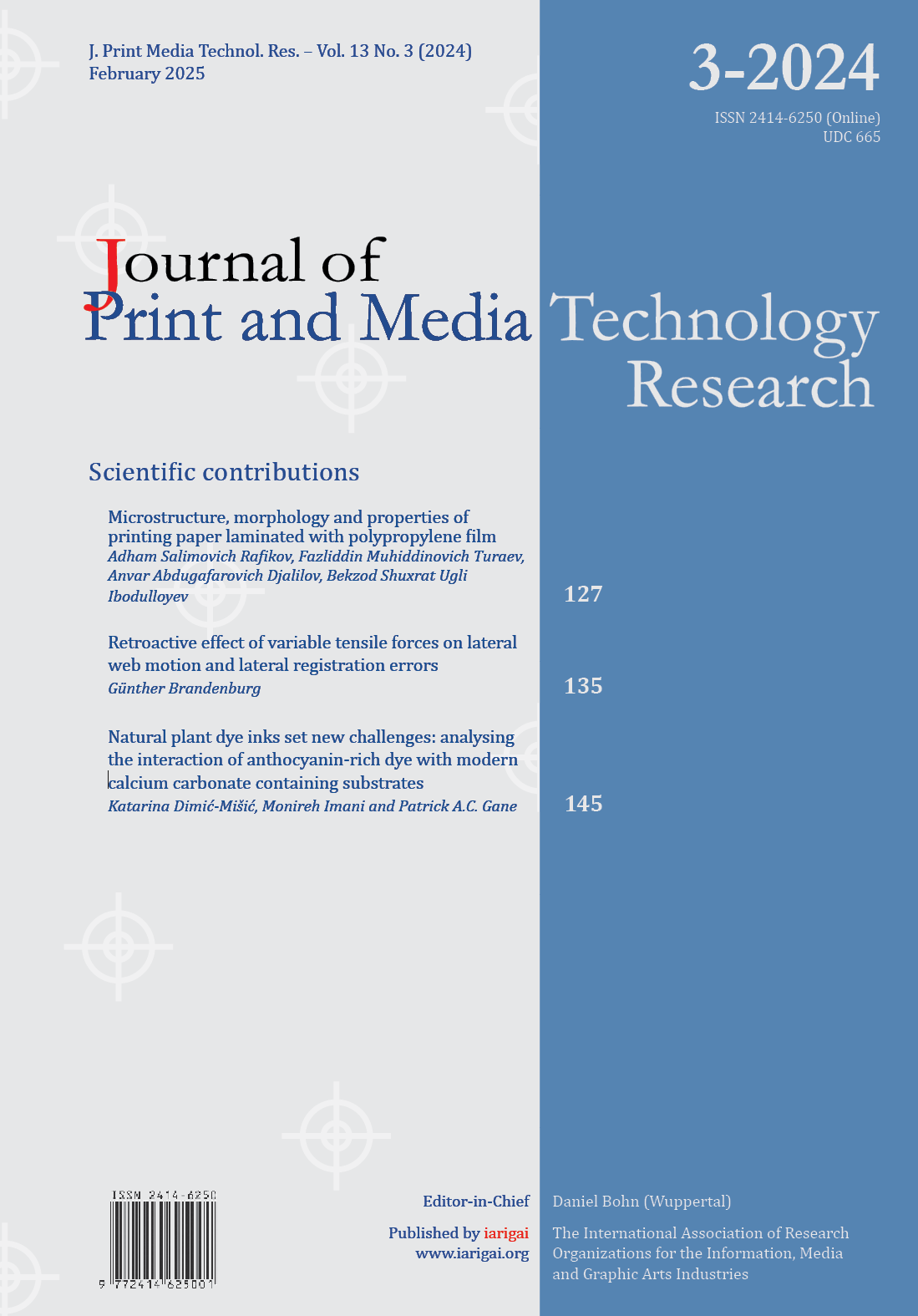Natural plant dye inks set new challenges: analysing the interaction of anthocyanin-rich dye with modern calcium carbonate containing substrates
Main Article Content
Abstract
Plant dyes are increasingly finding applications across a broad spectrum of print technologies, leading to replacement of conventional synthetic dyes and pigmented inks for a range of print media. Despite technical advances, industrial application faces some fundamental challenges of achieving the necessary critical print properties demanded when using such dyes. These include maintaining runnability, colour definition and fastness while retaining functional stability, the latter being particularly challenging since many prints are based on digital patterning adopting inkjet or flexographic methods. This study explores the fundamental interactions between an example pure dye ink, derived from Aronia melanocarpa, a member of the family Rosaceae commonly known as chokeberry, and specific substrate filler and coating components. Key interactive factors include ink formulation, the nature of dye chemistry in relation to substrate structure, its optical properties and constituent components. The acidity of the juice-based ink is mainly dependent on the amount of anthocyanin (ANC), a water-soluble phytochemical plant protective flavonoid, occurring together with other phenolic compounds. Novel experiments are reported in which interactive substrate components are isolated and studied directly in contact with the naturally acidic anthocyanin-rich ink. Coloration of the dye is confirmed to be pH-dependent, and, as a result, major challenges arise when acidic ink contacts alkaline substrate, which covers the majority of paper, board and cellulose-based packaging materials today, due to the dominance of calcium carbonate as the filler and coating pigment of choice. In parallel, dye imbibed into substrate pores surrounded by materials of contrasting refractive index lead to effective colour gamut changes as the ratio of transmitted light through dye and scattered light from surrounding materials changes. This effect is exemplified comparing high refractive index titanium dioxide (TiO2) versus lower refractive index calcium carbonate (CaCO3). Finally, a strategy is proposed aimed at controlling the interaction and enhancing the overall printing performance.
Article Details

This work is licensed under a Creative Commons Attribution-NonCommercial 4.0 International License.
